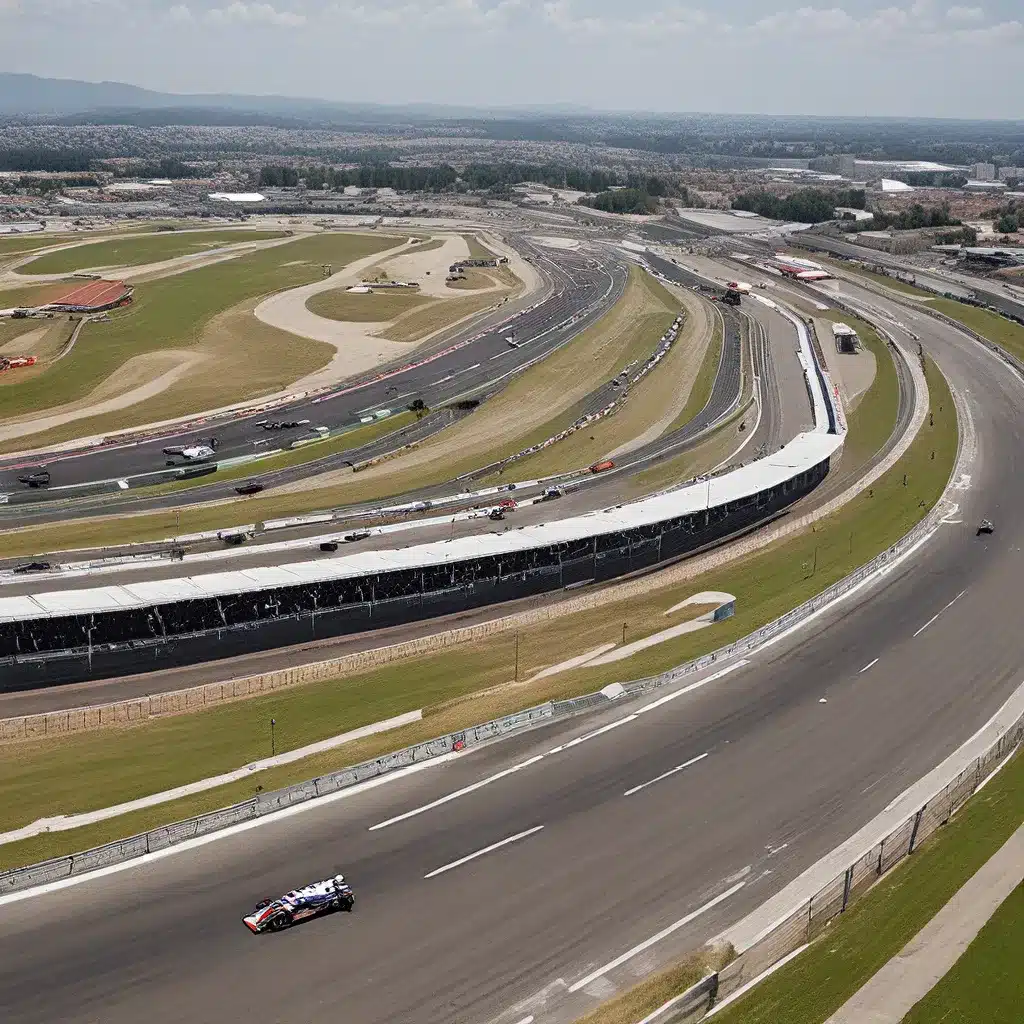
The Iconic Racetrack of Rio de Janeiro
The Autódromo Internacional Nelson Piquet, also known as the Autódromo de Jacarepaguá, stands as a testament to the passion and legacy of motorsports in Rio de Janeiro, Brazil. Named after the legendary Brazilian Formula One driver Nelson Piquet, this iconic racetrack has hosted some of the most thrilling and memorable racing events in the country’s history.
Nestled amidst the lush greenery of the Jacarepaguá neighborhood, the Autódromo Internacional Nelson Piquet has been a hub of motorsports excitement since its inception in the 1970s. The track’s construction was a testament to the growing popularity of Formula One in Brazil, and it quickly became a beloved destination for racing enthusiasts from all over the country.
The Circuit’s Design and Layout
The Autódromo Internacional Nelson Piquet is a 4.933-kilometer (3.066-mile) circuit with a total of 14 turns. The layout is characterized by a mix of long straightaways, tight corners, and challenging elevation changes, making it a true test of driver skill and car performance. The circuit’s design has evolved over the years, with various modifications and improvements to enhance the overall racing experience.
One of the most distinctive features of the Autódromo is the Senna S, a series of tight corners named after the legendary Ayrton Senna, who had a storied career at this very track. The Senna S is renowned for its technical challenge, requiring precise driving and exceptional car control to navigate successfully.
The Racetrack’s History and Significance
The Autódromo Internacional Nelson Piquet has been the stage for a wide range of motorsports events, from Formula One to Stock Car races, and even motorcycle Grand Prix competitions. The track has witnessed some of the most thrilling and unforgettable moments in Brazilian racing history, with numerous legendary drivers leaving their mark on its hallowed tarmac.
One of the most significant events held at the Autódromo was the Brazilian Grand Prix, which was part of the Formula One World Championship. From 1978 to 1989, the Brazilian Grand Prix was hosted at the Autódromo, with drivers such as Nelson Piquet, Ayrton Senna, and Alain Prost battling it out on the challenging circuit.
The Racetrack’s Upgrades and Modernization
Over the years, the Autódromo Internacional Nelson Piquet has undergone various upgrades and modernization efforts to keep pace with the evolving demands of motorsports. These improvements have included the installation of state-of-the-art safety features, such as improved barriers, runoff areas, and medical facilities, ensuring the highest levels of safety for both drivers and spectators.
In addition, the facility has also seen upgrades to its infrastructure, including the construction of new grandstands, hospitality suites, and other spectator amenities. These enhancements have helped to solidify the Autódromo’s reputation as a world-class racing venue, capable of hosting major international events.
The Autódromo’s Cultural Significance
Beyond its role as a premier motorsports destination, the Autódromo Internacional Nelson Piquet has also become an integral part of Rio de Janeiro’s cultural fabric. The circuit has evolved into a symbol of the city’s passion for racing, attracting enthusiasts from all walks of life to witness the thrilling action on the track.
The Autódromo’s connection to the local community is particularly notable. The facility has been the site of various community events, educational programs, and outreach initiatives, helping to foster a sense of pride and engagement among the residents of Jacarepaguá and the surrounding neighborhoods.
| Key Facts about the Autódromo Internacional Nelson Piquet | Details |
|---|---|
| Location | Jacarepaguá, Rio de Janeiro, Brazil |
| Circuit Length | 4.933 km (3.066 mi) |
| Number of Turns | 14 |
| First Grand Prix Held | 1978 |
| Last Formula One Grand Prix Held | 1989 |
| Capacity | Approximately 60,000 |
The Future of the Autódromo Internacional Nelson Piquet
As the world of motorsports continues to evolve, the Autódromo Internacional Nelson Piquet faces both challenges and opportunities. While the circuit has maintained its status as a beloved racing destination, there have been discussions and debates surrounding its long-term future.
Some experts suggest that the Autódromo may need to undergo further upgrades and renovations to remain competitive with newer, state-of-the-art racing facilities. Others have raised concerns about the environmental impact of the circuit, particularly its location within a densely populated urban area.
Nonetheless, the Autódromo’s legacy and cultural significance continue to inspire passionate discussions and proposals for its future. There is an ongoing debate about the potential for the circuit to be integrated into broader urban planning initiatives, with a focus on sustainable development and community engagement.
It is likely that the Autódromo Internacional Nelson Piquet will continue to evolve and adapt in the coming years, as stakeholders and experts work to balance the needs of the racing community, the local residents, and the broader environmental considerations. Regardless of its future, the circuit’s place in the hearts and minds of Brazilian motorsports enthusiasts is firmly cemented, and it will undoubtedly remain a cherished landmark in the rich history of racing in Rio de Janeiro.
